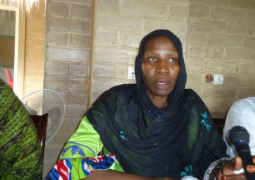Global Developments
Since the previous meeting of the Monetary Policy Committee (MPC), theInternational Monetary Fund (IMF) has revised global growth projections for2014 from 3.7 percent to 3.0 percent. The earlier optimism of robust US growth of around 3.0 percent in 2014 has been revised downwards following the 2.1 percent contraction in economic activity in the first quarter partly due to temporary factors such as the slowdown in inventory investment, the expiration
of some fiscal measures at the beginning of 2014 and severe winter weather.
Growth in advanced economies is forecast at 1.8 percent in 2014, higher thanthe 1.3 percent in 2013. Economic activity in the Euro zone continues to expand, albeit modestly. Growth was uneven with economic expansion inGermany offset by contraction in many other countries in the region. Growth isexpected to strengthen to 1.1 percent in 2014 and 1.5 percent in 2015. The outlook for emerging market economies remains relatively subdued. TheChinese economy is expected to grow by 7.4 percent, the weakest pace since2009. In other emerging economies, activity is weighed down by politicaluncertainty and tightening financial conditions. The outlook is for a modest 4.6percent growth in 2014.
The GDP growth for Sub-Saharan Africa is projected at 5.4 percent from 4.8percent in 2013, premised on improved agricultural production, increasedprivate consumption and expansion in commodity related projects.
Global inflation remains benign in advanced economies, although the risk ofdeflation in the Euro zone persists reflecting the combination of the substantialoutput gap, the decline in the prices of commodities, especially fuels and foodand low inflation expectations. In emerging markets and developingeconomies, inflation is expected to decline from about 6 percent in 2014 toabout 5 percent in 2015. To the extent that the decline in global commodity prices should help reduce price pressures, this reduction is more than offset byrecent exchange rate depreciations in a number of emerging and developingcountries, including The Gambia.
Global crude oil prices have fluctuated in recent months reflecting mainlygeopolitical developments. Year-to-date, oil prices averaged US$105.3 perbarrel, slightly higher than the average of US$105.09 per barrel a year earlier.
The FAO Food Price Index averaged 206 points in 2014, 6 points lower thanin June 2013. The decline was the third in succession and was largely theresult of marked drop in cereal and vegetable oil prices.
The Domestic Economy Growth
The growth outlook for the Gambian economy has moderated since theprevious meeting of the MPC. Owing to uncertainties surrounding agriculturalproduction due to the prospects of inadequate rainfall, real GDP is projected at5.3 percent in 2014, slightly lower than the 5.6 percent in 2013 and the earlier forecast of between 6.0–6.5 percent. Agriculture value-added is forecast toincrease by 12.5 percent, industry (2.9 percent) and services (3.6 percent).
Money and Banking Sector Developments
In the year to end-June 2014, money supply grew by 8.1 percent, lower thanthe 14.8 percent a year ago and the target of 15.0 percent. The decelerationin the growth of money supply was mainly the result of slower pace ofexpansion of the net domestic assets (NDA) and the contraction in the netforeign assets (NFA) of the banking system. The NDA rose to D13.6 billion, or12.6 percent, but lower than the growth rate of 15 percent a year earlier. TheNFA contracted to D4.95 billion, or 2.5 percent.
Reserve money, the Bank’s operating target increased to D5.78 billion, or 19.7 percent. Although reserve money growth was above the target of 13.5 percent, it was lower than the strong expansion of26.4 percent a year earlier.
The decrease in the pace of expansion of reserve money was mainly theresult of the contraction in the NFA of the Central Bank by 8.4 percent compared to the robust growth of 21.4 percent a year ago. The NDA of theCentral Bank, on the other hand, increased significantly to D2.5 billion, or 97.2percent. Central Bank net claims on government rose from D1.3 billion inJune 2013 to D2.2 billion in June 2014.
The banking sector remains fundamentally sound. Recent data indicate thatcapital and reserves increased to D3.45 billion in June 2014, or 16.2 percent from June 2013. The risk-weighted capital adequacy ratio averaged 35.1percent, higher than the minimum requirement of 10.0 percent. All the banksmet the capital adequacy requirement.
Total assets increased to D25.57 billion, or 14.2 percent from a year earlier.
Gross loans and advances, which accounted for 23.4 percent of total assets,decreased to D5.97 billion, or 2.3 percent from June 2013. Private sectorcredit, net of provisions declined from D4.42 billion in June 2013 to D4.09billion in June 2014. The non-performing loans (NPL) ratio increased from 11.3percent in June 2013 to 16.0 percent in June 2014.
Deposit liabilities totaled D15.15 billion in June 2014, higher than the D14.28 billion in June 2013.
The industry recorded a net income of D197.0 million in the first six monthsof 2014 compared to D80.6 million in the corresponding period in 2013. Thereturn on assets was 3.3 percent and return on equity (21.3 percent) comparedto 1.7 percent and 10.8 percent respectively in the first half of 2013.
In the year to end-June 2014, the domestic debt rose to D14.7 billion, or 29.3percent from a year earlier. Treasury bills and Sukuk-Al Salaam bills,accounting for 82.4 percent and 4.0 percent of the domestic debt stock,increased by 36.1 percent and 50.1 percent respectively.
Yields in all the maturities rose reflecting in the main the tight monetary policystance. The yield on the 91-day, 182-day and 364-day bills increased from 12.40 percent, 13.44 percent and 14.54 percent in June 2013 to 14.31 percent,15.95 percent and 18.12 percent respectively in June 2014. The weightedaverage interbank rate also increased from 10.45 percent in June 2013 to14.54 percent in June 2014.
Government Fiscal Operations
Provisional data on Government fiscal operations for the first half of 2014 indicate that total revenue and grants increased to D4.12 billion (22 percent of GDP), or 26.0 percent from the corresponding period in 2013. The outturn was also higher than the target of D4.10 billion (21.0 percent of GDP). Domesticrevenue, comprising tax and non-tax revenue, amounted to D3.16 billion, higherthan the D2.82 billion in the first half of 2013 and the target of D3.14 billionattributed mainly to the 14.0 percent increase in tax revenue. Non-tax revenue,on the other hand, rose by only 2.0 percent.
Expenditure and net lending totaled D4.9 billion (26 percent of GDP), higherthan the outturn of D4.2 billion (25 percent of GDP) and the projection ofD4.83 billion. Current and capital expenditure rose to D3.3 billion and D1.5billion compared to D3.0 billion and D1.2 billion respectively in thecorresponding period in 2013.
The overall budget balance (including grants) recorded a deficit of D778.5million (4.0 percent of GDP) which was financed by both domestic and foreignsources.
External Sector DevelopmentsProvisional balance of payments estimates indicate an overall surplus ofUS$10.12 million in the first quarter of 2014, higher than the deficit of US$4.70million in the corresponding quarter in 2013. The current account deficit widened from US$16.70 million in the first quarter of 2013 to US$19.41 millionin the quarter under review. Of the components of the current account, thegoods account deficit narrowed to US$37.30 million compared to a deficit ofUS$44.5 million in the same period in 2013. Merchandise exports rose toUS$41.1 million, or 101.4 percent. Total imports also rose to US$87.9 million,but at a slower pace of 25.0 percent.
The surplus in the services account and the transfers account narrowed to US$12.8 million and US$13.5 million compared to US$17.7 million and US$16.0 million respectively in the corresponding quarter in 2013. Furthermore, the deficit in the income account widened from US$5.9 million to US$8.4 million during the same period. The capital and financial account, on the other hand, recorded increased surplus from US$11.97 million to US$29.54 million in the first quarter of 2014.
At end-June 2014, gross international reserves totaled US$163.5 million, equivalent to 4.0 months of import cover compared to US$176.06 million, or 4.8 months of import cover a year ago.
Volume of transactions in the foreign exchange market decreased to US$1.33billion in the year to end-July 2014, or 10.7 percent from a year earlier. In theyear to end-June 2014, the Dalasi depreciated against the US Dollar by 19.4percent, Euro (20.8 percent) and Pound Sterling (30.5 percent).
Inflation Outlook
Consumer price inflation, measured by the National Consumer Price Index (NCPI), declined to 5.4 percent in June 2014, from5.8 percent in June 2013.
Both food and non-food inflation decelerated to 6.2 percent and 4.4 percent respectively from 6.8 percent and 4.6 percent in June 2013 respectively.
However, core inflation, which excludes the prices of volatile food items andenergy, accelerated to 5.5 percent in June 2014 from 3.8 percent a yearearlier.
At the last MPC meeting in May 2014, the MPC decided to leave the policyrate unchanged having assessed the policy stance to be appropriate.
Monetary policy is forward looking because policy actions take time to worktheir way through the economy and have their full effect on inflation.
Although headline inflation trajectory has not deteriorated, the MPC sees therisks to the inflation outlook to be skewed to the upside. Apart from weather-related risks, the sharp depreciation of the Dalasi is expected to put upward pressure on inflation as higher import prices would pass-through to domestic consumer prices. In addition, readings of the latest private sector business sentiment survey indicate heightened inflationary expectations which could affect the price behavior of agents in the economy.
Decision
Against this backdrop, the MPC has decided to increase the policy rate by 2.0percentage points to 22.0 percent. The MPC would continue to monitor pricedevelopments and take appropriate action.





